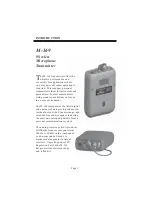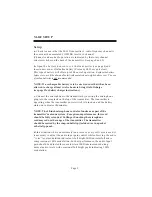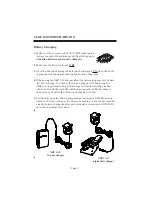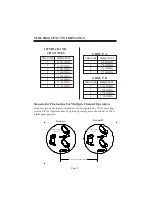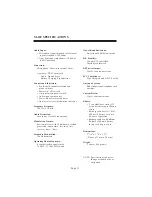
Page 3
M-169 CONTROLS
n
CHANNEL AND MODE SWITCHES:
These rotary
switches are used to set the transmitter to the desired
operating frequency and companded or non-companded
mode of operation.
(See page 8 and 9 for frequency selection chart.)
o
BATTERY COMPARTMENT:
The battery
compartment features a hinged battery cover
and an alignment system that ensures proper
battery polarity. Battery installation and
removal is facilitated by simply manipulating
the bottom of the battery.
p
AUXILIARY AUDIO INPUT JACK:
Allows transmitter to use line level,
earphone level, or fixed AUX as an
audio source.
q
AUDIO “VOICE” MODULATION
INDICATOR:
This indicator is used in making adjustment
with the Audio Input Gain Control.
r
MIC / ANTENNA JACK:
This jack accepts an
electret type microphone having a 48” long cord with
a micro-mini 2.5mm mono plug. The microphone cord
functions as part of the transmitter’s antenna system
and must be in place for auxiliary audio input operation.
If microphone function is not necessary, the optional
microphone switch should not be on for this operation.
s
POWER / BATTERY STATUS INDICATOR:
This LED
indicator will illuminate continuously when the unit is on, indicating normal operation.
When the battery voltage drops below 6 volts, the LED will flash rapidly, indicating that
a new battery is needed.
t
OPTIONAL MIC SWITCH:
This switch turns off the microphone without turning off
the transmitter carrier.
u
AUDIO INPUT GAIN CONTROL:
This is a microphone and AUX level input gain
control. This control is used with the “Voice” modulation indicator.
v
ON / OFF SWITCH:
This switch turns the transmitter on and off.



